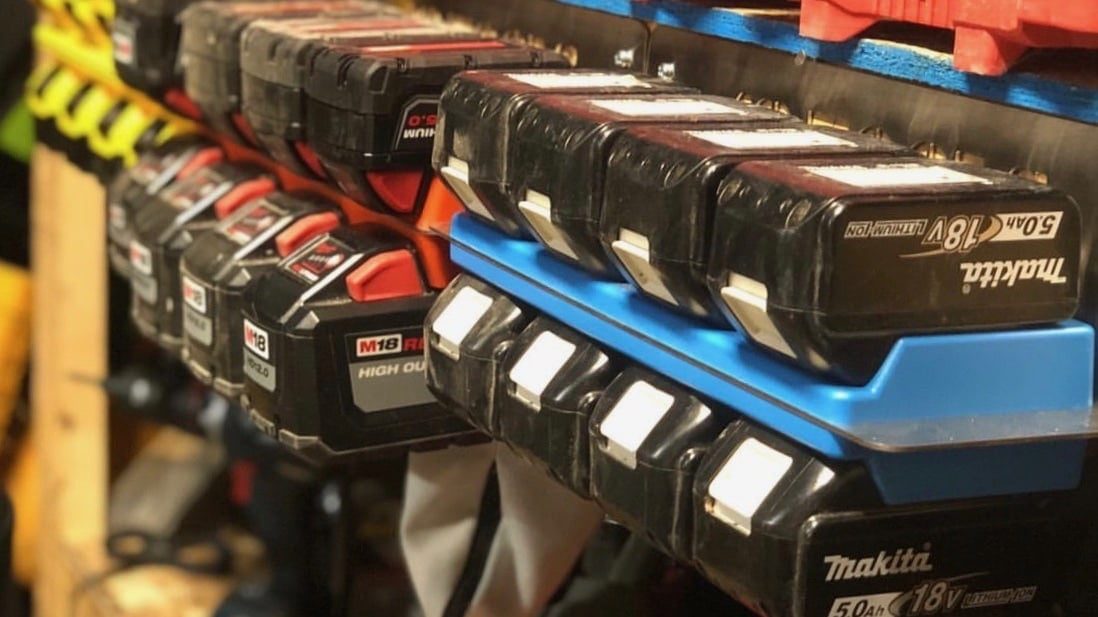In the mining industry, there's a growing concern over safety due to an increase in fires caused by lithium-ion and lithium polymer batteries found in portable tools. These batteries, known for their high energy output, pose a significant risk of fire and explosion if not handled or stored correctly. They can overheat and potentially explode under conditions like overcharging or physical damage.
Centennial's mine site has taken notable steps to address these risks effectively. By implementing the 48 tools battery and tool holders, they've set a standard for safe storage and charging practices. This approach not only prevents accidents but also ensures compliance with the latest safety regulations, making it a model for others in the mining industry. This initiative is crucial for maintaining a safe work environment and protecting both workers and equipment from fire hazards associated with battery-powered tools.
feature Article is posted below
Fires on battery powered tools increase
This safety alert provides safety advice for the NSW mining industry.
Issue
There has been a steady increase in the number of fires associated with portable tools that use
lithium-ion and lithium polymer batteries as an energy source.
Lithium-ion and lithium polymer batteries are the preferred energy source for portable tools due to
the high levels of energy that the batteries provide. However, this introduces the risk of fire or
explosion when batteries and battery charging equipment are not used according to the
manufacturers’ safety directions.
Batteries can enter a state of ‘thermal runaway’ when subjected to over-charging, damage or abuse.
Abuse includes dropping, crushing, piercing, or being subjected to vibration or higher than normal
temperatures from external heat sources. Depending on the state of charge of the battery, thermal runaway may lead to rupturing the battery cells with subsequent fire resulting in the complete destruction of the battery, or the production of a vapour cloud with significant explosion risk and toxic gases. Any subsequent fire or explosion may place people at serious risk of injury and also result in damage to other plant and materials.
The Work Health and Safety (Mines and Petroleum Sites) Regulation 2022 Schedule 2 (3) Electrical Engineering Control Plans section 2 requires the control plan to set out control measures for the risk to health and safety from the occurrence of uncontrolled fires. Incidents
Incidents of lithium-ion battery fires that have occurred include:
• a lithium-ion battery caught fire while being transported in a tool bag in the back of a work utility
at an open cut mine. The battery was free to move within the tool bag and was possibly short circuited.
• a lithium-ion battery caught fire while connected to a charger in an underground mine. The fault was identified as being caused by moisture ingress, which led to thermal runaway of the battery.
• a lithium-ion battery was left unattended on the back seat of a utility. The inside temperature of the vehicle exceeded the maximum recommended temperature for the battery and resulted in the battery catching fire.
• a lithium-ion battery caught fire when run over after falling out of a man basket in an underground mine.Safety Bulletin SB22-172
Figure 1 - Damage to battery after being run over Figure

2 - Tool left unattended in vehicle

Figure 3 - Example of a well laid out charging station


Recommendations
• Only use charging equipment recommended by the manufacturer for that particular battery.
• Ensure that transporting of spare batteries does not expose them to risk of physical damage or
short circuit of the connecting pins.
• Do not expose batteries to water as this can cause a short circuit between the battery
connections.
• Do not expose batteries to temperatures greater than 50oC, or as recommended by the manufacturer. It should be noted that temperatures inside a vehicle can be much greater than external ambient temperatures. For example, the internal temperature of a vehicle left with


